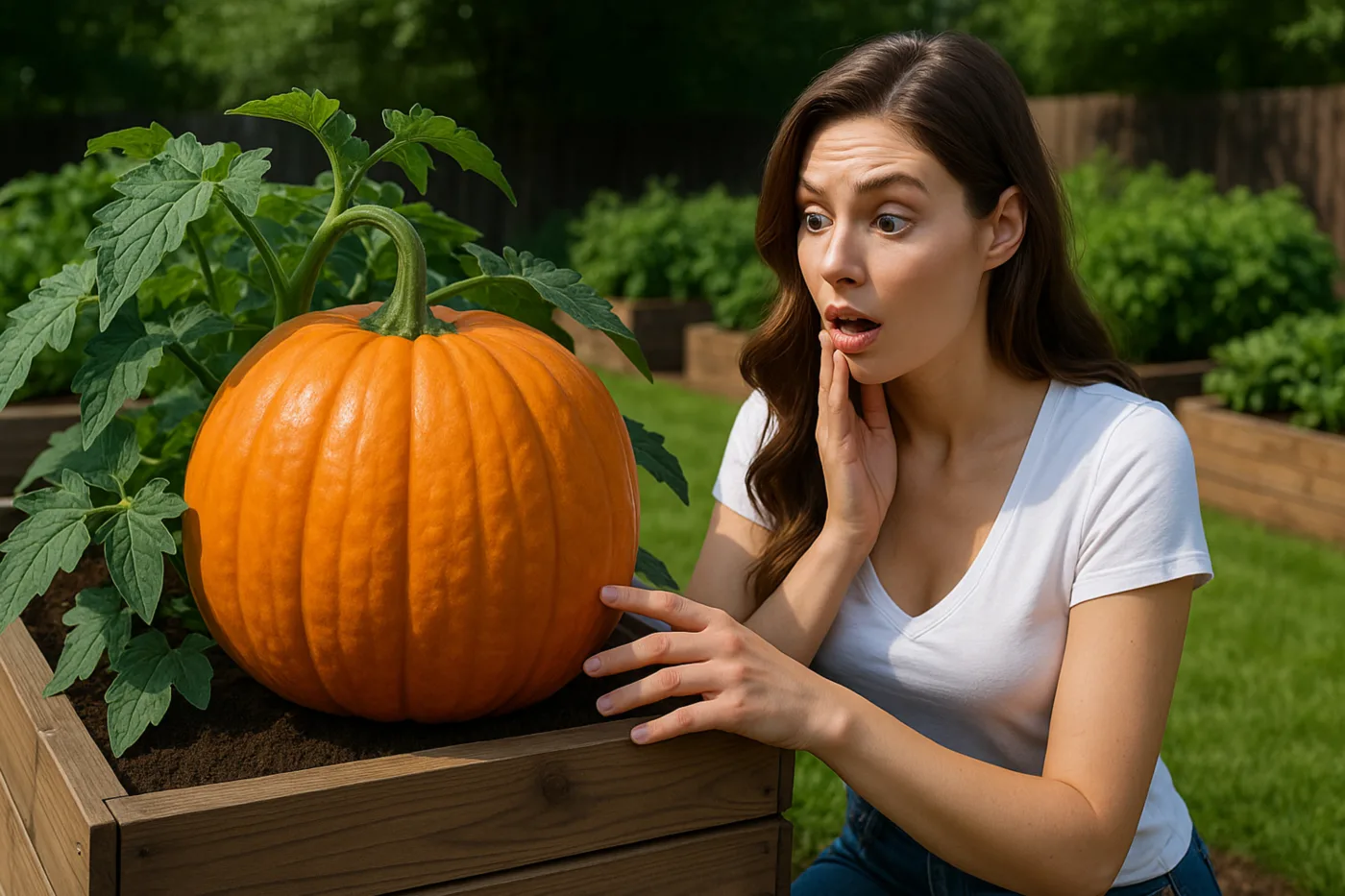Forget about expensive artificial fertilizers that look like they're from space. Your plants prefer simple, homemade solutions. In this article, we reveal 5 miraculous natural homemade fertilizers that you can make yourself, without a lab – just with kitchen scraps and a little gardening love. Your plants will thank you.
When we step onto our balcony, garden or look at the shelf with houseplants, we all want one thing: to be greeted by a mini botanical paradise, not a few sad stems begging for mercy. And here comes the secret: success is not in expensive bottles from garden centers, but in serving plants what they would cook themselves – if only they knew how to use a stove.
Banana peels, coffee grounds, eggshells, green tea and even a little soot from an old stove – these are all secret ingredients that will turn your plants into garden and living room winners. And before you think that preparing fertilizers will be harder than a Sunday roast, let us reassure you: for most recipes, all you need is a good mood, a watering can and maybe an old pot that has been eaten by the ravages of time.
So, get your apron ready (although you'll probably just water it) and open your own home "plant pharmacy"!
A cooking show for plants is starting – without Masterchef, but with lots of green rewards!
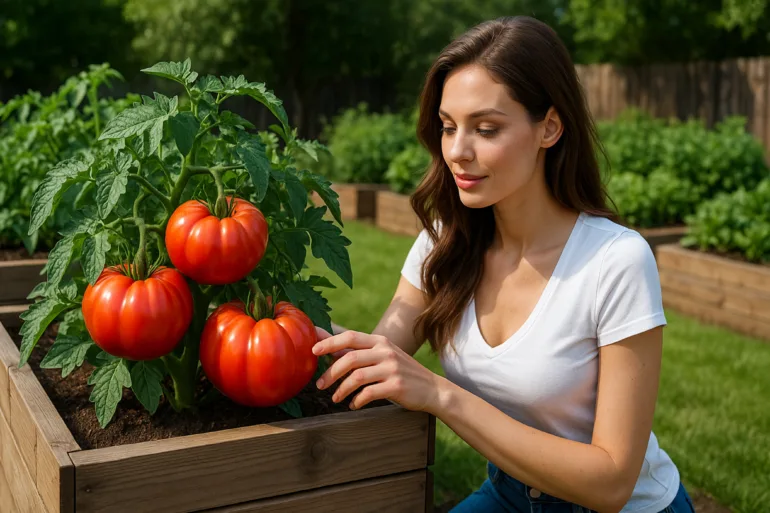
5 miraculous natural homemade fertilizers
1. Banana peels – fertilizer for flowers and fruit trees
Banana peels they're not just something to throw in the compost pile - they're a real superfood in the plant world. They're an excellent source potassium, and also calcium, nitrogen, phosphorus and magnesium (Source: citymagazine.si). Potassium is key for abundant flowering and fruit formation, while calcium helps prevent problems such as black rot in tomatoes (Source: citymagazine.si).
Due to its rich composition, banana fertilizer strengthens plants - stimulates development strong roots and stems, lush leaves and increases resistance to diseases and pests (Source: ona.slovenskenovice.si). It can be used on all ornamental and useful plants, but is especially loved by flowering potted plants and fruit-bearing plants: orchids, African violets, amaryllis, roses, tomatoes, peppers, cucumbers and zucchini (Source: ona.slovenskenovice.si). High on the list – 5 miraculous natural homemade fertilizers.
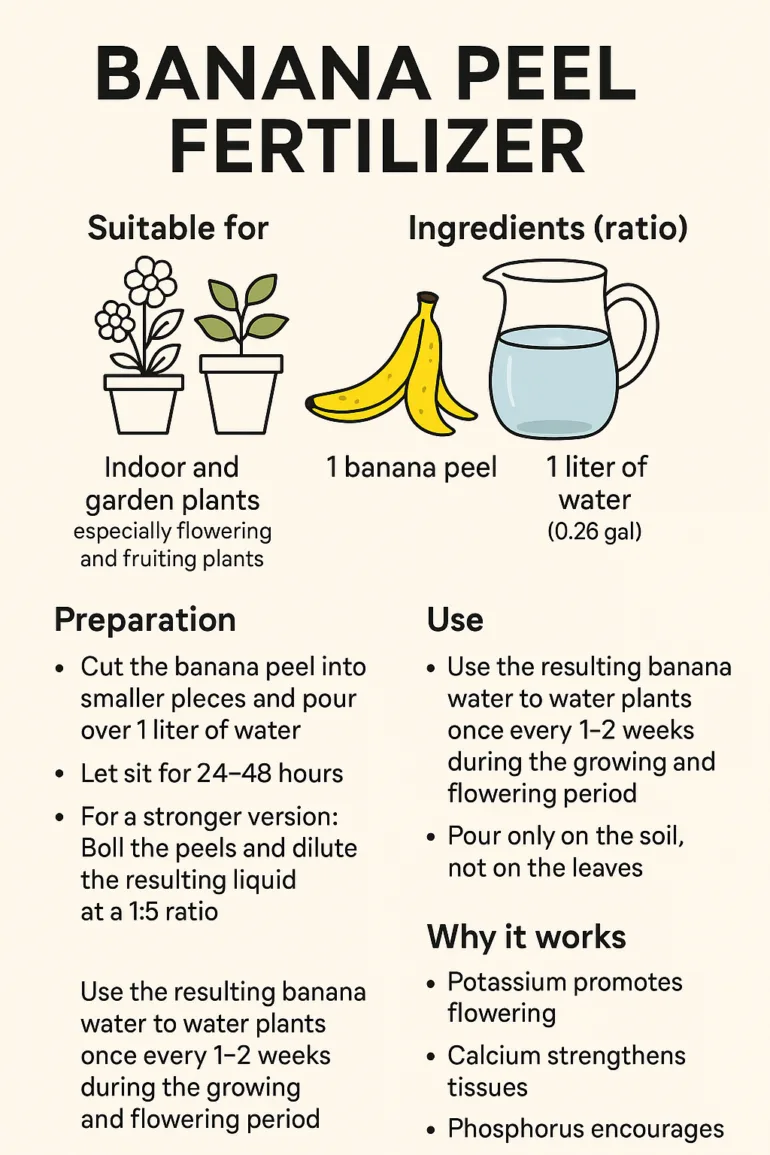
- Suitable for: Indoor and garden plants, especially flowering and fruit-bearing plants.
- Ingredients (ratio): 1 banana peel per 1 liter of water (0.26 gal).
- Preparation:
- Cut the banana peel into small pieces and pour over 1 liter of water.
- Let stand for 24–48 hours.
- For a stronger version, boil the peels and dilute the resulting liquid in a ratio of 1:5.
- Usage: The resulting banana water is used to water plants. once every 1–2 weeks during the growth and flowering period. Only pour over the soil, not the leaves. The peels can also be buried directly into the soil.
- Why it works: Potassium promotes flowering, calcium strengthens tissues, phosphorus accelerates root development, and magnesium improves photosynthesis.
2. Coffee grounds – fertilizer for leafy plants and protection against slugs
Coffee grounds It's like espresso for plants - it makes them grow taller. It contains nitrogen, something phosphorus, potassium and magnesium, which makes it ideal for stimulating the growth of green parts of plants (Source: zelenisvet.com).
It slightly acidifies the soil, which is especially beneficial for plants that love an acidic pH – like hydrangeas, rhododendrons and blueberries. And if you add a gardener’s pinch of faith to coffee grounds, it also repels slugs – they hate coffee almost as much as we hate Monday mornings.
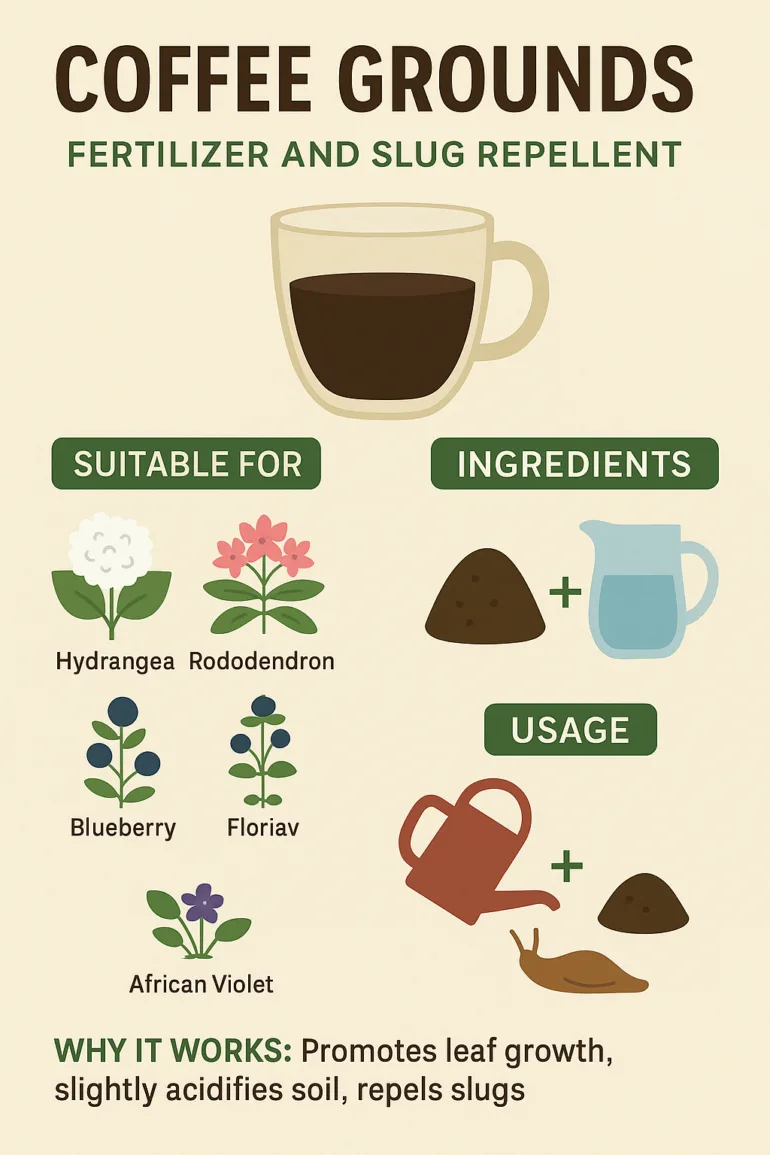
- Suitable for: Hydrangeas, rhododendrons, blueberries, African violets, lawns.
- Ingredients (ratio): 1 cup of coffee grounds per 10 liters of water (2.6 gal) or dry coffee grounds for direct use.
- Preparation:
- Add dry coffee grounds to water and let stand overnight.
- It can also be sprinkled directly around plants.
- Usage: Watering 2 to 3 times a month or direct sprinkling in a thin layer.
- Why it works: Nitrogen promotes leaf growth, coffee slightly acidifies the soil, making nutrients more accessible, and the smell of coffee naturally repels slugs.
3. Eggshells – a calcium shield for plants
Eggshells they are an inexhaustible resource calcium, important for the development of strong plant cell walls. If your tomatoes are falling off due to black rot or if your peppers look like they've joined the sad fruit club, eggshells are the solution.
In addition to calcium, they also contain phosphorus and magnesium (Source: sensa.si). They work more slowly, but therefore in the long term – they are a natural version of long-lasting fertilizers. One that should not be missing from the list of 5 miraculous natural homemade fertilizers.

- Suitable for: Tomatoes, peppers, eggplant, zucchini, fruit trees, flowering plants.
- Ingredients (ratio): Shell 4–6 eggs per 1 liter (0.26 gal) of water for a liquid fertilizer or grind into a powder for direct use.
- Preparation:
- Wash the peels, dry them, and crush them.
- They can be soaked in water for 2–5 days and the liquid used, or they can be ground into a powder and sprinkled on the soil.
- Usage: Watering once a month or sprinkling when planting seedlings.
- Why it works: Calcium strengthens plant tissues, prevents fruit rot, and improves disease resistance.
4. Green tea – a gentle fertilizer for sensitive plants
If green tea the elixir of longevity for humans, why not share this gift with plants? It is rich in antioxidants and mild minerals, which stimulate root growth and increase disease resistance (Source: gardeningknowhow.com).
Green tea is perfect for young seedlings and houseplants that need a gentle boost, not a nutritional shock.
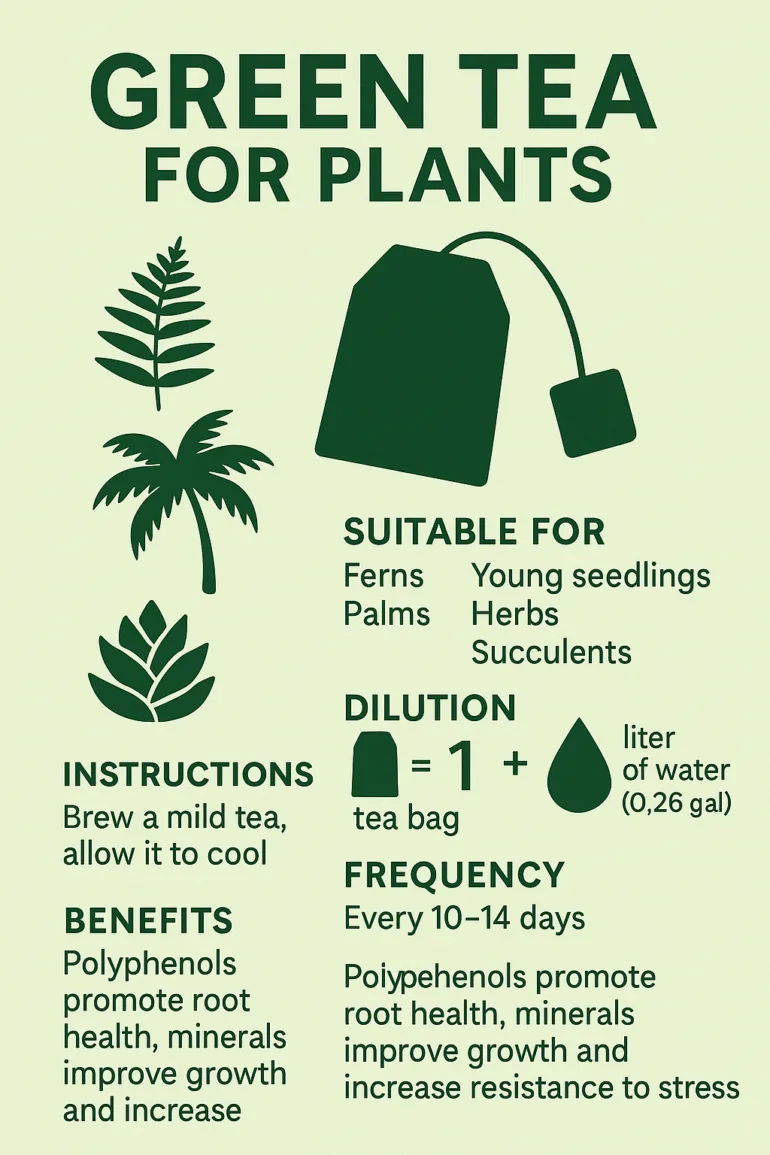
- Suitable for: Ferns, palm trees, young seedlings, herbs, succulents.
- Ingredients (ratio): 1 green tea bag per 1 liter of water (0.26 gal).
- Preparation:
- Prepare a mild tea, let it cool.
- Usage: Watering once every 10–14 days.
- Why it works: Polyphenols promote root health, minerals improve growth and increase stress resistance
5. Wood soot – mineral booster for the garden
If you are lucky and still have wood soot from an old stove, you have a natural supermineral. Wood soot they are full potassium, calcium, phosphorus and trace elements (Source: garden.eco).
They improve soil structure, slightly raise pH, and act as antiseptics – like mini healers for your lawn and garden beds. The most ingenious on the list – 5 miraculous natural homemade fertilizers.

- Suitable for: Brassicas, carrots, beets, potatoes, all garden plants.
- Ingredients (ratio): A handful of wood soot per 1 m².
- Preparation:
- Sift the dry soot and remove larger particles.
- Usage: Mix them into the topsoil before planting.
- Why it works: Minerals improve nutrient availability, increase disease resistance, and improve soil structure.
Conclusion: 5 miraculous natural homemade fertilizers
If plants could choose, they would choose these homemade treats for lunch. With a banana cocktail, coffee espresso, egg calcium, green tea and a wood mineral booster, you will become a real plant masterchef – no chemical additives, no unnecessary costs.
And the next time someone asks you why you have the most beautiful garden on the street, you can calmly answer them:
“Because I'm a chef, a gardener, and a magician all in one.”



